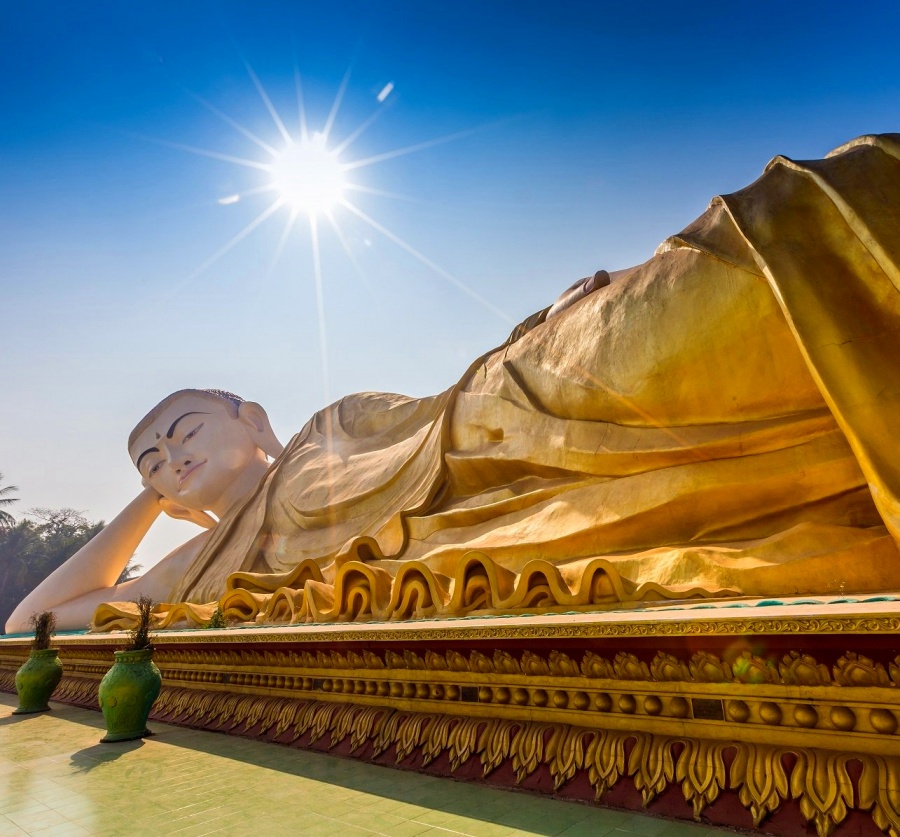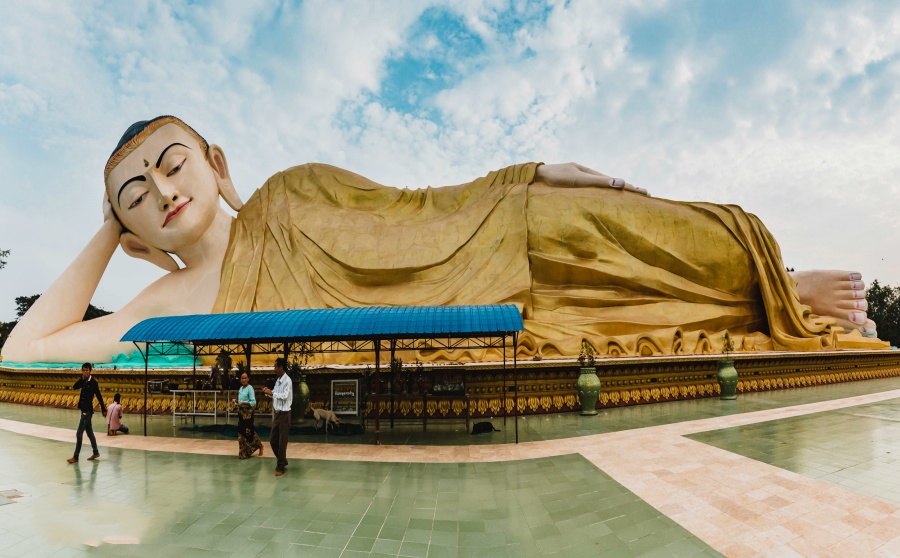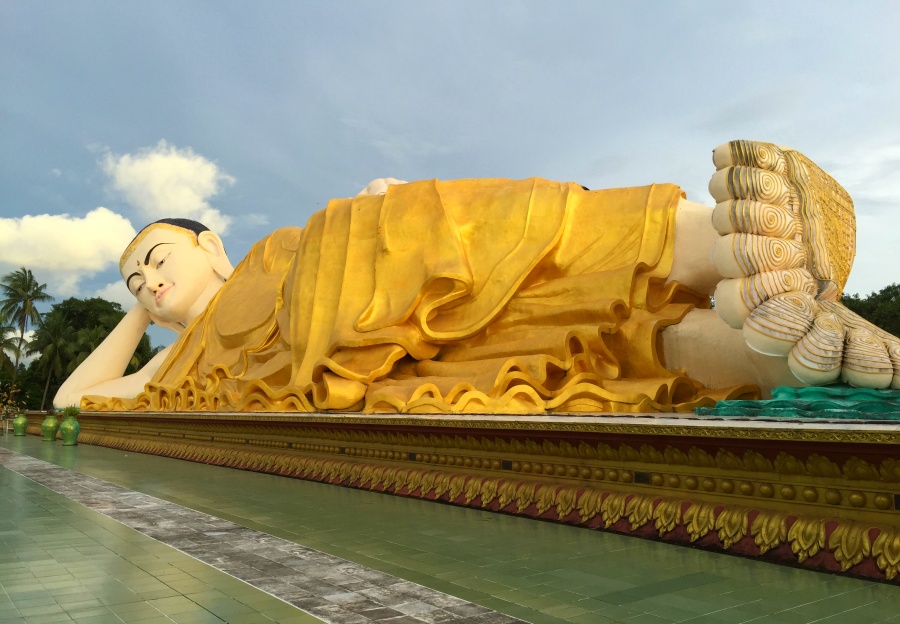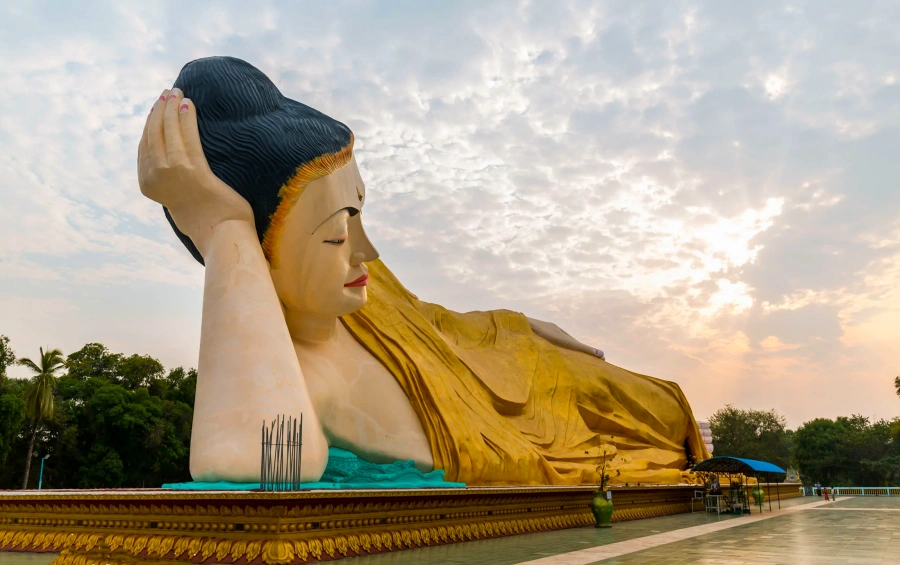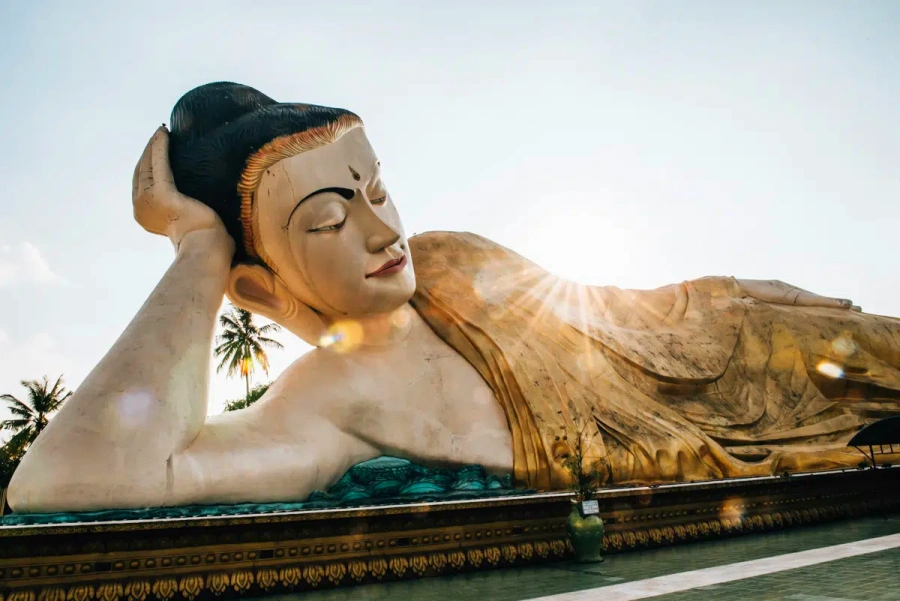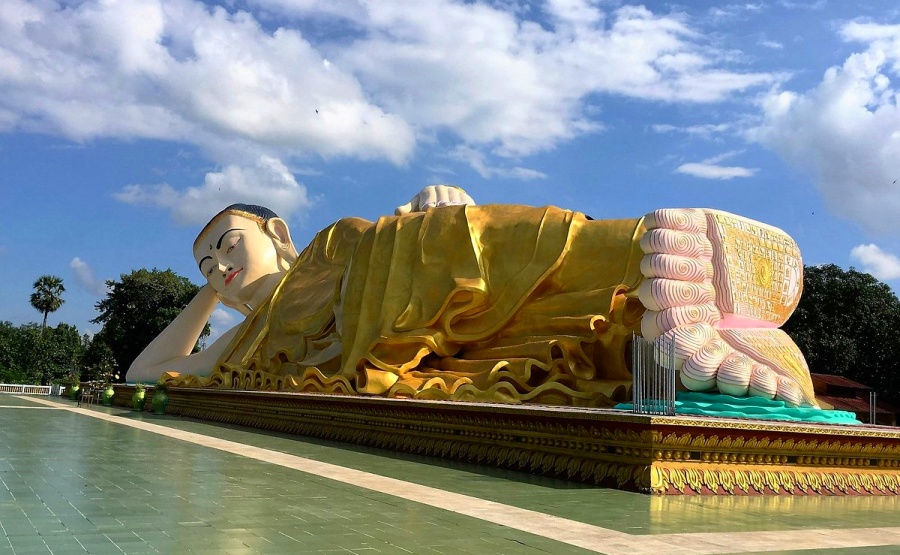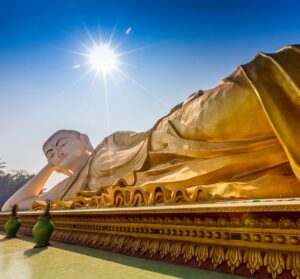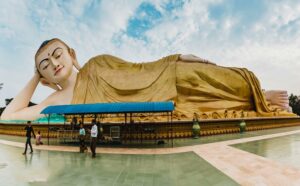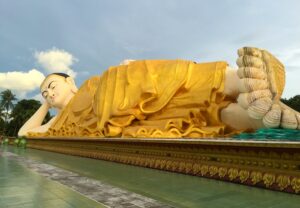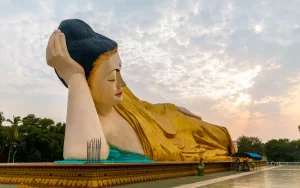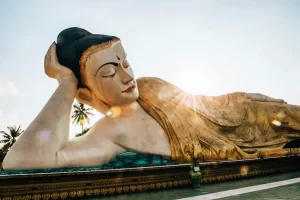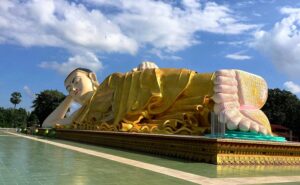The Mya Tha Lyaung Reclining Buddha in Bago, Myanmar, is one of the country’s most impressive and significant religious landmarks. Known for its enormous size and serene posture, this reclining Buddha statue is a symbol of the Buddha’s transition into Parinirvana, marking his final moments before achieving nirvana after death. It is a must-see attraction for both pilgrims and tourists visiting Myanmar.
Historical Significance and Origins
The Historical Site
The Mya Tha Lyaung Reclining Buddha is built upon a brick mound which may date back to the late 15th century, a period during the reign of King Dhammazedi. The site itself holds considerable historical and spiritual importance. The demon tiles uncovered during excavation point to its connection to the earlier Buddhist traditions in the region. Although the statue was completed in 2001, the area has long been a sacred space for Buddhist worshippers.
The Significance of the Reclining Buddha
In Buddhist iconography, the reclining Buddha represents the Buddha during his last days on Earth before entering Parinirvana, a state of ultimate enlightenment and freedom from the cycle of birth and death. Reclining Buddha statues often depict the Buddha lying on his right side with his head resting on his hand or supported by a pillow, symbolizing peace and tranquility in the face of death.
Construction and Design
The statue was built in the modern era but was designed with respect for traditional Burmese art and architecture. It stands at an astounding 82 meters (270 feet) in length, making it one of the largest reclining Buddha statues in the world. Its size, combined with the tranquil and serene expression of the Buddha, makes it a powerful symbol of the Buddha’s teachings on impermanence, suffering, and liberation.
Architectural Features and Details
Size and Structure
The Mya Tha Lyaung Buddha is one of the largest Buddha statues in Myanmar. Measuring a remarkable 82 meters in length, the statue dwarfs visitors, who often stand in awe at its size and grandeur. The Buddha is depicted reclining in a relaxed yet dignified pose, his head resting on his right hand and his eyes closed in peaceful meditation.
The construction of the statue is a testament to the skill of Burmese craftsmen and the resources invested in its creation. The statue is built in concrete with gold leaf applied to various parts of the structure, creating a golden glow that can be seen from a distance.
The Soles of the Buddha’s Feet
As with many reclining Buddha statues in Myanmar, the soles of the Buddha’s feet are intricately designed with Buddhist symbols. The soles are often inscribed with sacred motifs such as the Wheel of Dharma, lotus flowers, and other symbols of Buddhist teachings and the Buddha’s path to enlightenment. These carvings serve as a reminder of the Buddha’s journey and are a popular feature for visitors to admire.
The soles of the feet are also intended to convey the Buddha’s compassion for all beings, symbolizing his ability to teach and guide followers toward enlightenment.
Artistic Influence and Style
The Mya Tha Lyaung Buddha reflects traditional Burmese Buddhist artistry, combining influences from earlier centuries with modern construction techniques. The statue’s facial features are serene, with the Buddha’s eyes gently closed in meditation. The body of the statue is covered in gold leaf and fine details that reflect Burmese craftsmanship and religious devotion.
The Open-Air Location
One of the most distinctive aspects of the Mya Tha Lyaung Buddha is its open-air location. Unlike many other large Buddha statues, which are surrounded by temples or pagodas, the Mya Tha Lyaung Buddha is set against the open sky. This open, unobstructed view allows visitors to fully appreciate the grandeur of the statue and the peaceful environment surrounding it.
The site is not overly commercialized, which makes it a tranquil spot for meditation and reflection. Visitors can take in the beauty of the statue and the natural surroundings in peace, far from the crowds that may gather at more tourist-heavy sites.
Location and Accessibility
How to Reach the Mya Tha Lyaung Buddha
The Mya Tha Lyaung Reclining Buddha is located just west of Bago, Myanmar. It is a short distance from other major religious sites in Bago, such as the Shwethalyaung Reclining Buddha, another iconic and massive Buddha statue. The two statues are located within a 5-minute drive of each other, making it easy for visitors to explore both sites in a single trip.
Directions from Bago City Center:
- From Bago city center, the Mya Tha Lyaung Buddha is about 5 km away, and can be easily reached by car, taxi, or local transport.
- The site is also near the Kalyani Ordination Hall, an important Buddhist hall where Buddhist ordinations and ceremonies are held.
Nearby Attractions
- Shwethalyaung Reclining Buddha: This is the second-largest reclining Buddha statue in the world and is located just a short distance from the Mya Tha Lyaung Buddha. It is a significant religious site and provides an excellent opportunity to see another monumental Buddhist statue.
- Shwemawdaw Pagoda: This golden pagoda is one of the most revered sites in Myanmar and is located near the city center. It features a tall spire and attracts many pilgrims throughout the year.
- Kalyani Ordination Hall: This hall is essential to the Buddhist community in Bago. The ordination ceremony here is a deeply spiritual experience and an important aspect of Myanmar’s Buddhist culture.
- Hinthada Monastery: This monastery in Bago is historically significant and adds to the religious atmosphere of the city.
Best Time to Visit
Optimal Time for a Visit
The best time to visit Bago and the Mya Tha Lyaung Buddha is during the cooler months of November to mid-March. During this period, the weather is relatively dry, with temperatures that are more pleasant for outdoor activities and exploration.
- April is also an ideal time, as it coincides with the Bago Festival, which celebrates the city’s rich Buddhist heritage. Visitors during this time can enjoy cultural events, processions, and local festivities.
Avoiding the Rainy Season
It is advisable to avoid visiting the Mya Tha Lyaung Buddha during the rainy season (from May to October), as heavy rains can make outdoor visits uncomfortable and limit visibility.
Visiting Tips
What to Wear
When visiting the Mya Tha Lyaung Reclining Buddha, it is important to dress modestly as a sign of respect for the religious site. Long pants and covered shoulders are recommended, especially if you plan to visit other religious sites in Bago.
Photography Etiquette
- Photography is allowed at the Mya Tha Lyaung Buddha, but visitors should be mindful of the sacred nature of the statue. Avoid taking inappropriate photos or disturbing other visitors who are in quiet reflection.
- The golden hour around sunrise or sunset offers the best lighting conditions for photography, as the sunlight casts a warm glow over the statue and the surrounding area.
Respectful Behavior
When visiting religious sites in Myanmar, including the Mya Tha Lyaung Buddha, be sure to act with respect and reverence. Maintain a peaceful demeanor, especially in the presence of monks and worshippers.
Accommodations
- Hotels in Bago: There are various hotels and guesthouses in Bago to suit different budgets, from basic accommodations to more upscale options. Many accommodations are located near the city center, with easy access to the main attractions.
The Mya Tha Lyaung Reclining Buddha in Bago, Myanmar, is an awe-inspiring sight, offering both spiritual significance and architectural grandeur. Standing as one of the largest reclining Buddha statues in the world, it serves as a symbol of the Buddha’s journey to Parinirvana and provides a tranquil space for contemplation and reflection. Its serene location and impressive size make it an essential stop for those exploring the rich cultural and religious heritage of Myanmar.


 Tours
Tours
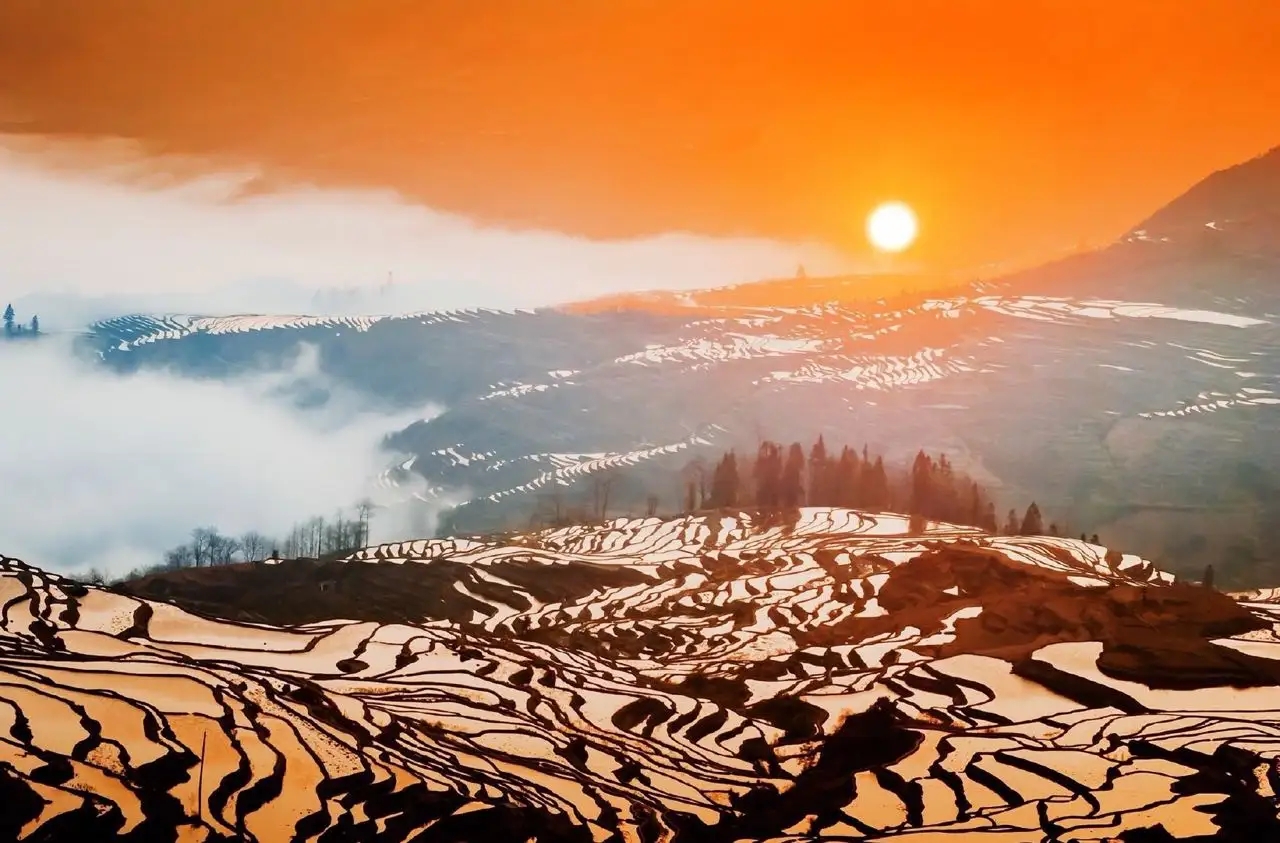
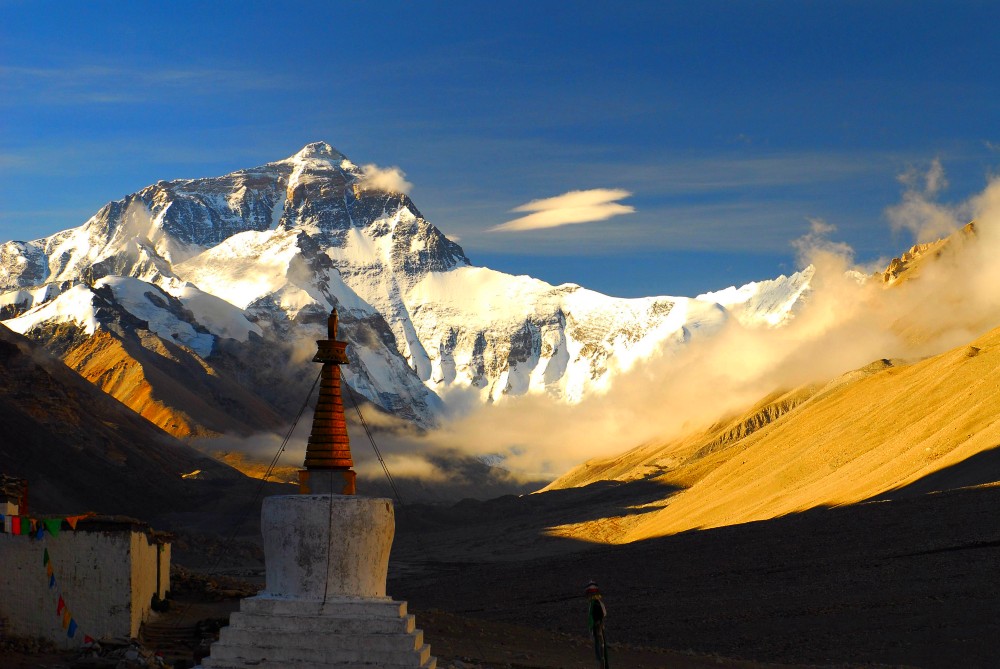
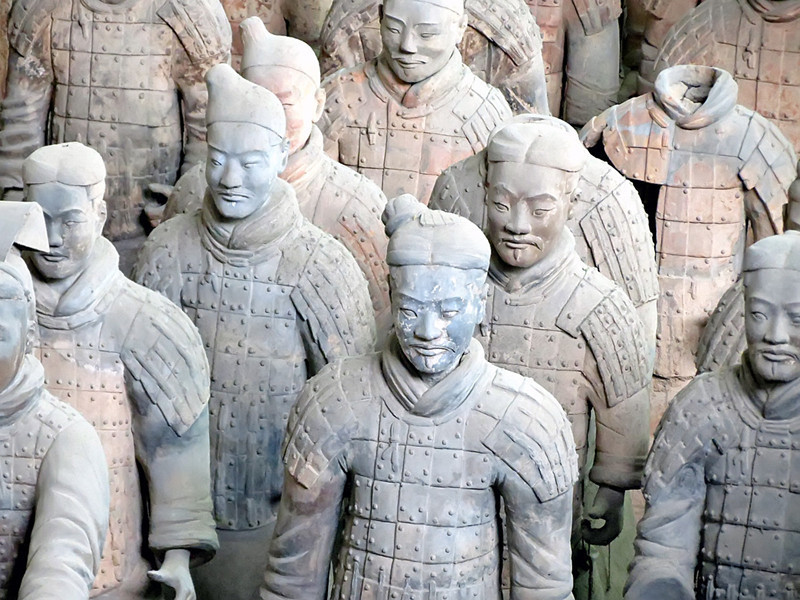
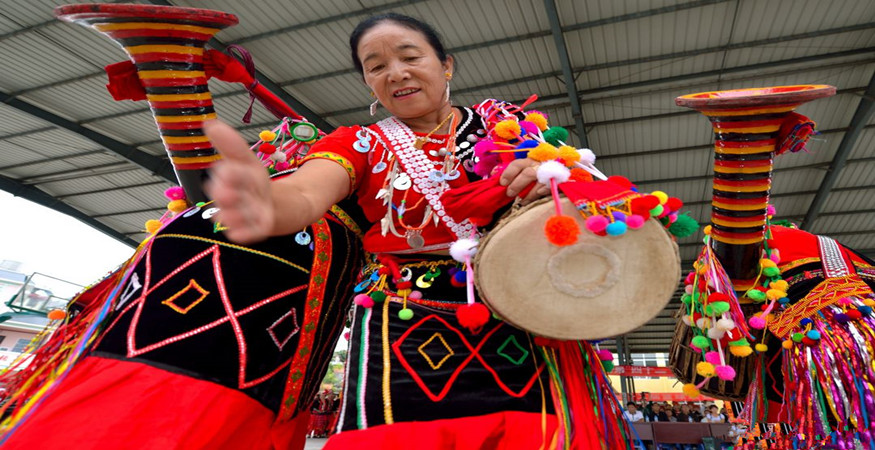
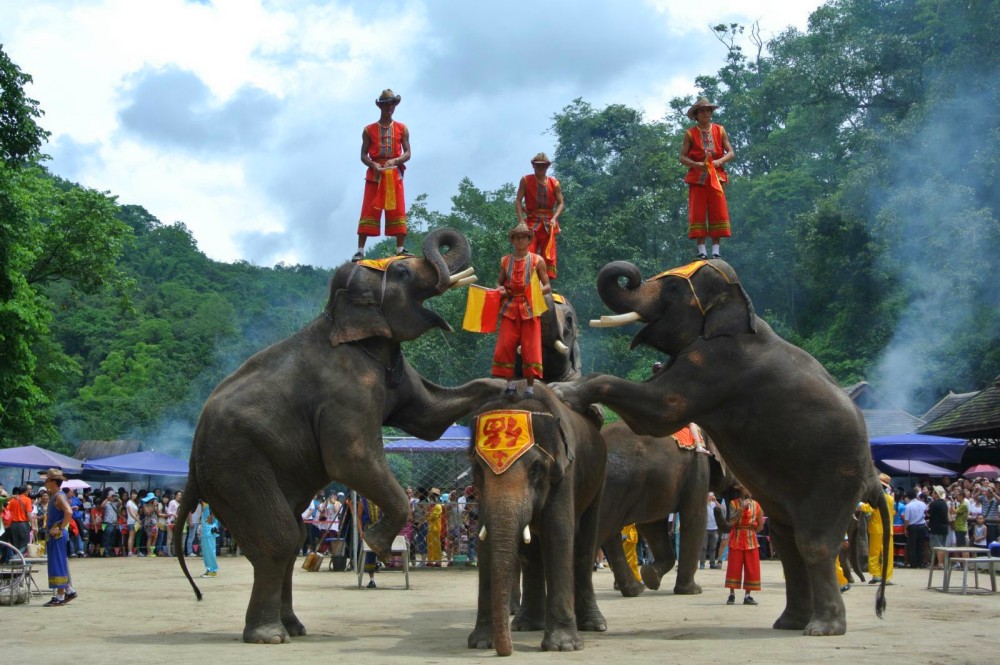
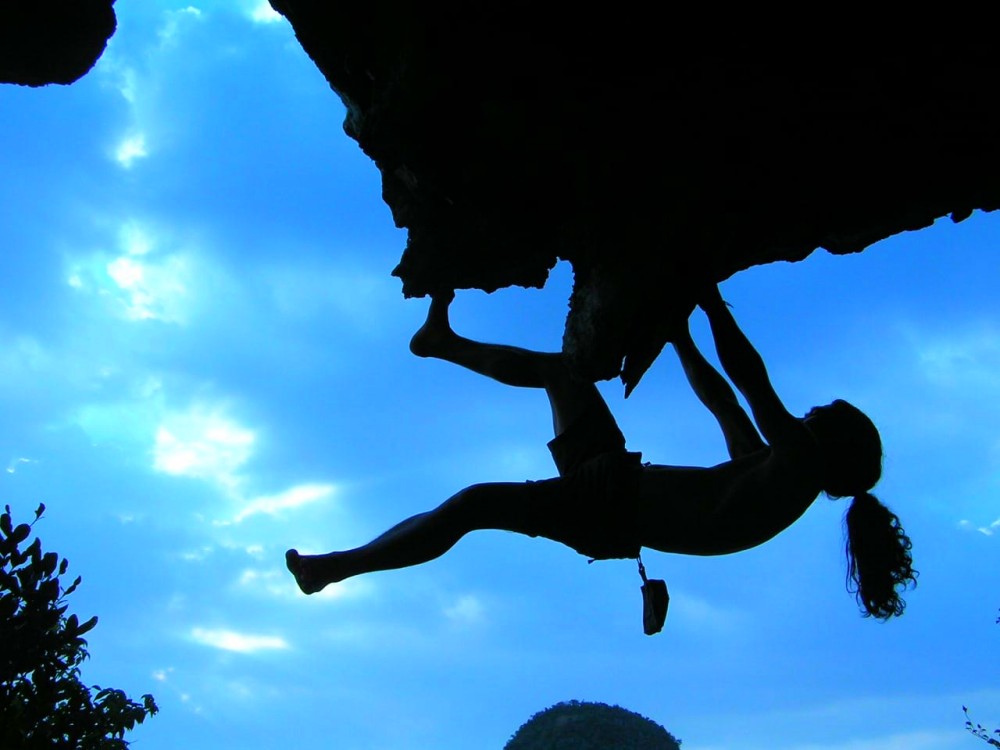
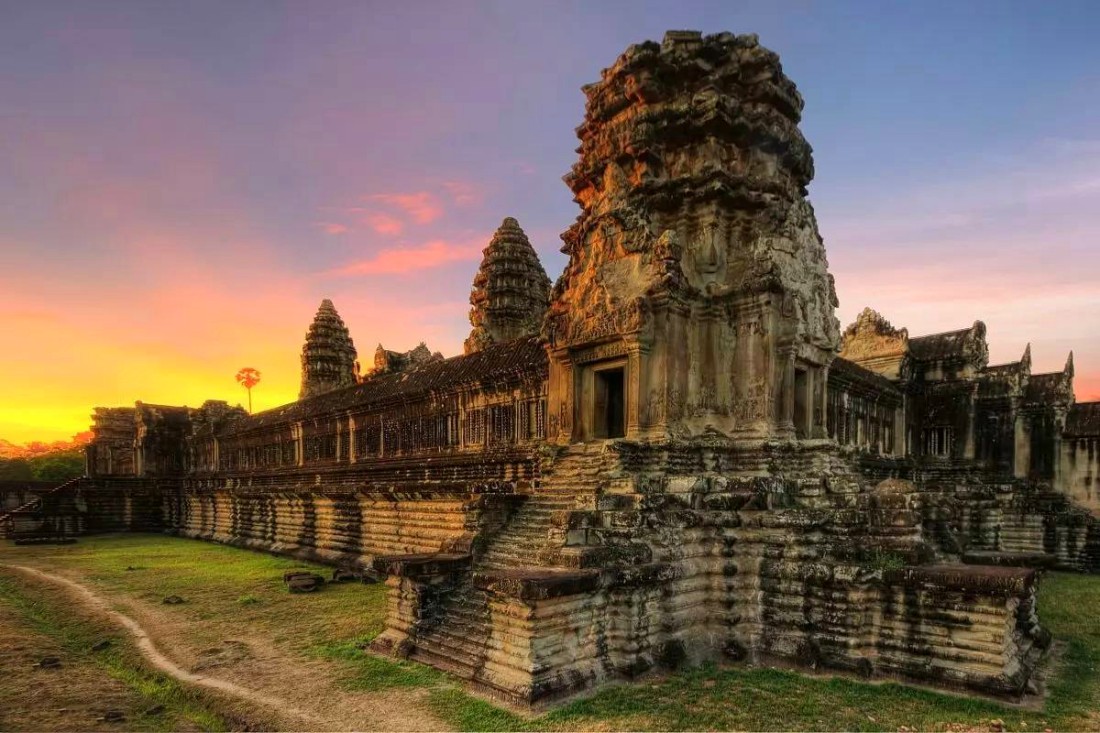
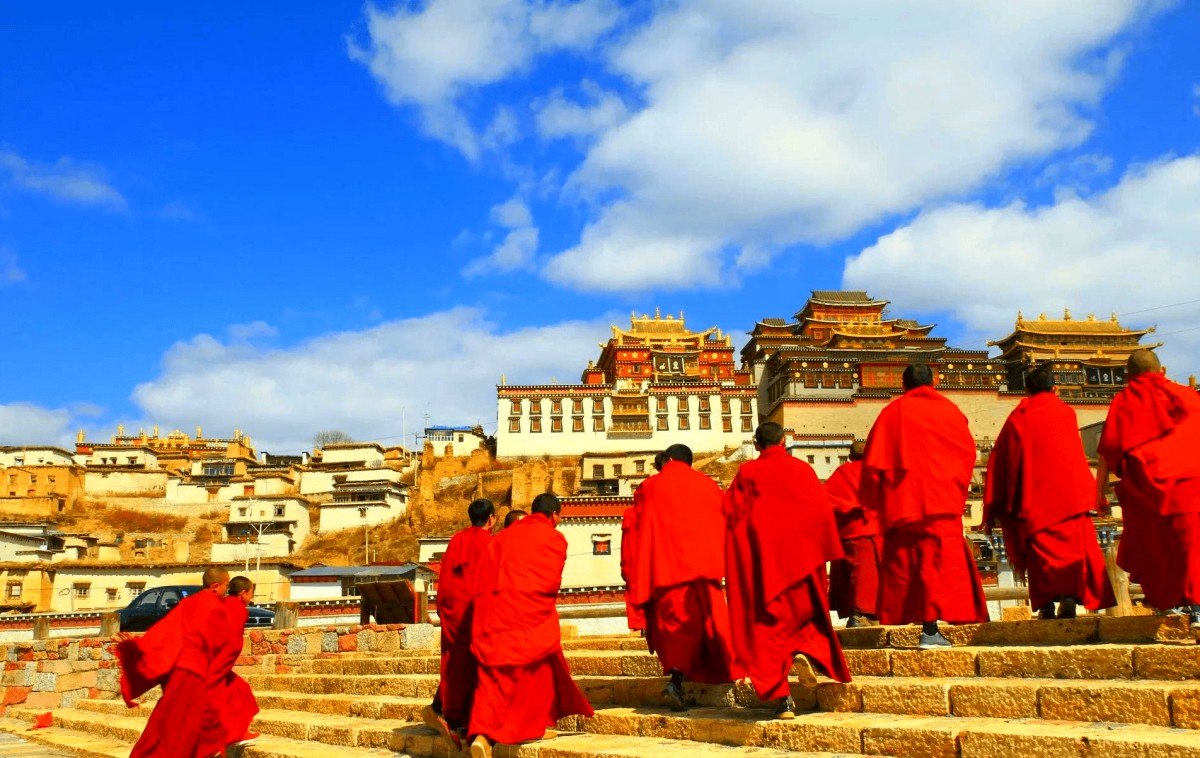

 Destinations
Destinations Attractions
Attractions Golf
Golf Customize
Customize About Us
About Us Contact
Contact


